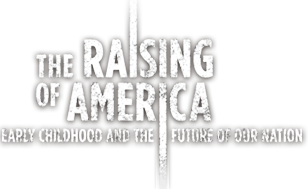DISCOVER
Snap, Snap Synapse
Click here to see
A baby girl is born into the world. She already has 80 billion or so brain cells (called neurons), almost all the brain cells she will ever have. But those neurons are only partially wired together into circuits. The connections, called synapses, which link those billions of cells and different areas of the brain together are relatively few.
But as she starts to hear, see, smell and feel the world, her brain lights up like a fireworks show, electrical signals speeding up and down neurons and their growing bush-like branches, called dendrites.
Her early interactions with the world literally build her brain architecture. She forms 700 or more new connections, or synapses, between neurons every second in her first years. These circuits allow neurons to communicate rapidly with each other as she interacts with and adapts to her environment, processing sights and sounds, behaviors and language, feelings and emotions. That's 1,000 new connections every time you say "peek-a-boo"; 60 million new synapses every day.
Jack Shonkoff, M.D, director of the Harvard Center on the Developing Child, explains that these connections comprise the architecture of the developing brain. They provide a strong or fragile foundation for all future learning, behavior and health.
But the brain doesn’t wire itself on automatic pilot. Brain architecture, and the future skills and behaviors they enable, is shaped by a baby’s interactions with her surroundings, especially her primary caregivers. These experiences reinforce and strengthen some circuits, while circuits that are not used weaken and wither away in a process called pruning, or in the fancy terminology neuroscientists love: “Use it or lose it.”
Safe, Stable and Nurturing – Safe, stable and nurturing relationships and environments are key to building strong brain architecture, according to the U.S. Centers for Disease Control (CDC) Essentials for Childhood framework, while adverse child experiences, like hunger and deprivation, loss of a parent, neglect and abuse, exposure to lead and other toxic chemicals, even excessive noise, can weaken brain architecture, especially without the support of a responsive, caring adult.
Brain Plasticity – The brain continues to build new neural connections throughout life, but at a much slower pace. Brain plasticity, or capacity for change, is greatest during the early years, which is what makes infancy and early childhood a period of such great opportunity—and vulnerability, according to the Center on the Developing Child. Like a house, it’s easier and less costly to build a strong foundation than to identify a problem and have to retrofit later.
TAKE-AWAY
Brains are built over time. Our early relationships and environments, our history, literally get under the skin and shape the architecture of our developing brain.


















